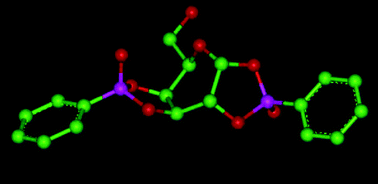Structures of carbohydrate–boronic acid complexes determined by NMR and molecular modelling in aqueous alkaline media
Abstract
The structures of thermodynamically stable aromatic

* Corresponding authors
a
Unilever R&D, Port Sunlight, Quarry Road East, Wirral, UK
E-mail:
malcolm.nicholls@unilever.com
Fax: 0151 641 1852
Tel: 0151 641 3254
The structures of thermodynamically stable aromatic

 Please wait while we load your content...
Something went wrong. Try again?
Please wait while we load your content...
Something went wrong. Try again?
M. P. Nicholls and P. K. C. Paul, Org. Biomol. Chem., 2004, 2, 1434 DOI: 10.1039/B312760E
To request permission to reproduce material from this article, please go to the Copyright Clearance Center request page.
If you are an author contributing to an RSC publication, you do not need to request permission provided correct acknowledgement is given.
If you are the author of this article, you do not need to request permission to reproduce figures and diagrams provided correct acknowledgement is given. If you want to reproduce the whole article in a third-party publication (excluding your thesis/dissertation for which permission is not required) please go to the Copyright Clearance Center request page.
Read more about how to correctly acknowledge RSC content.
 Fetching data from CrossRef.
Fetching data from CrossRef.
This may take some time to load.
Loading related content
